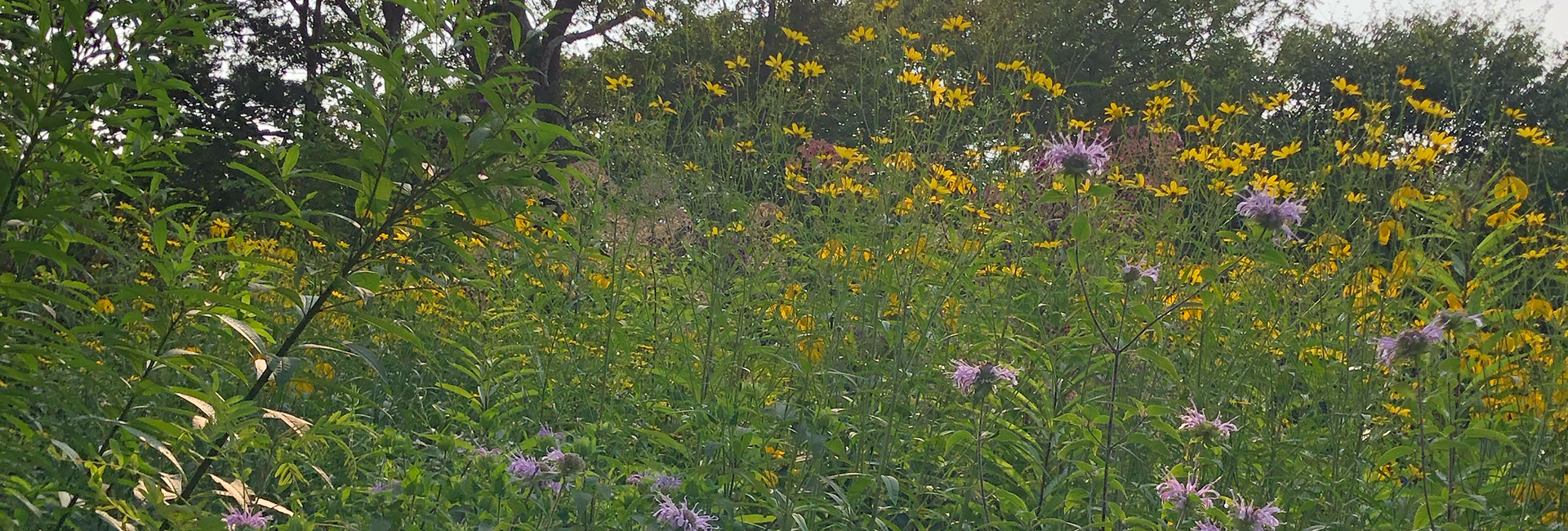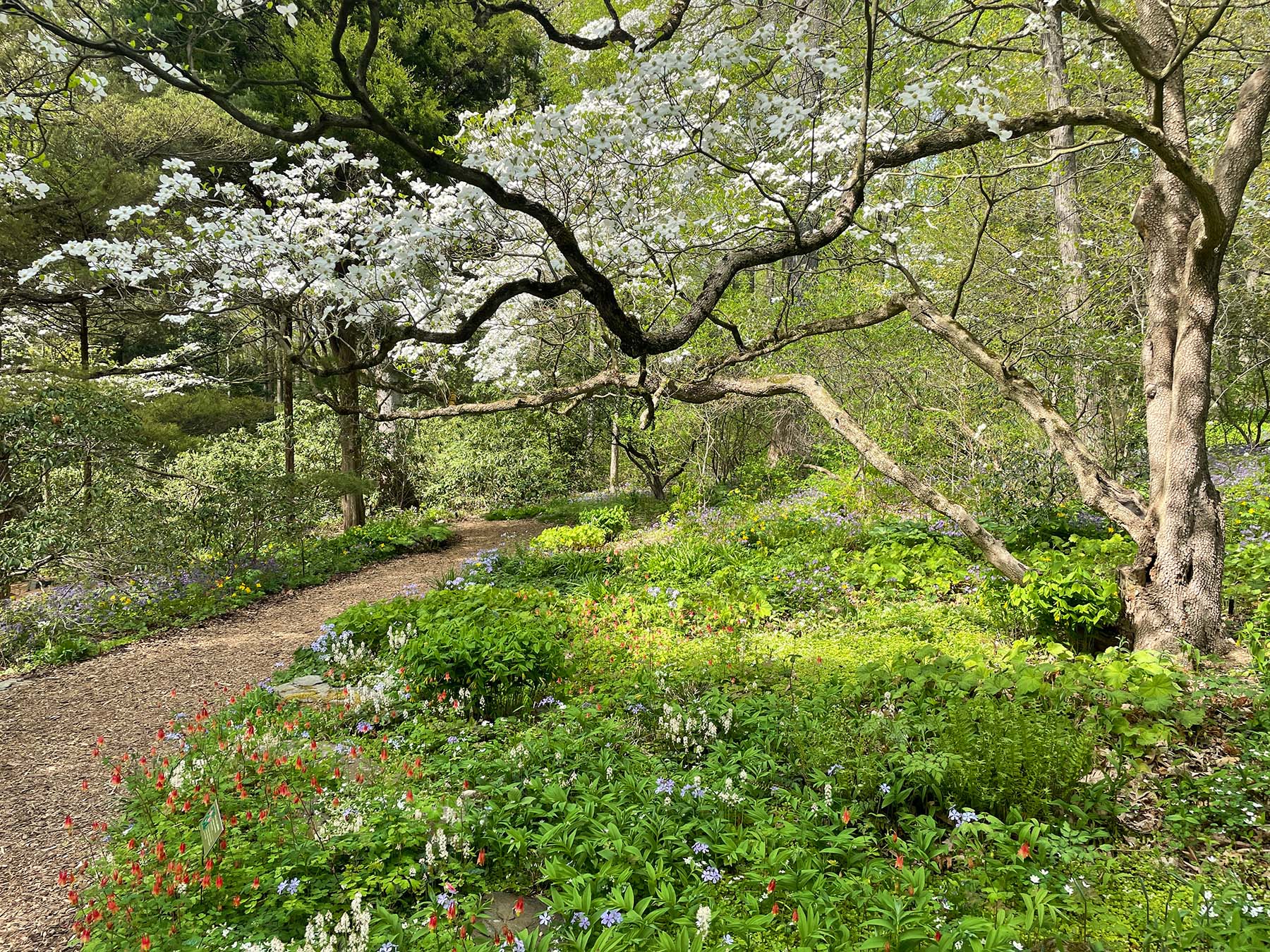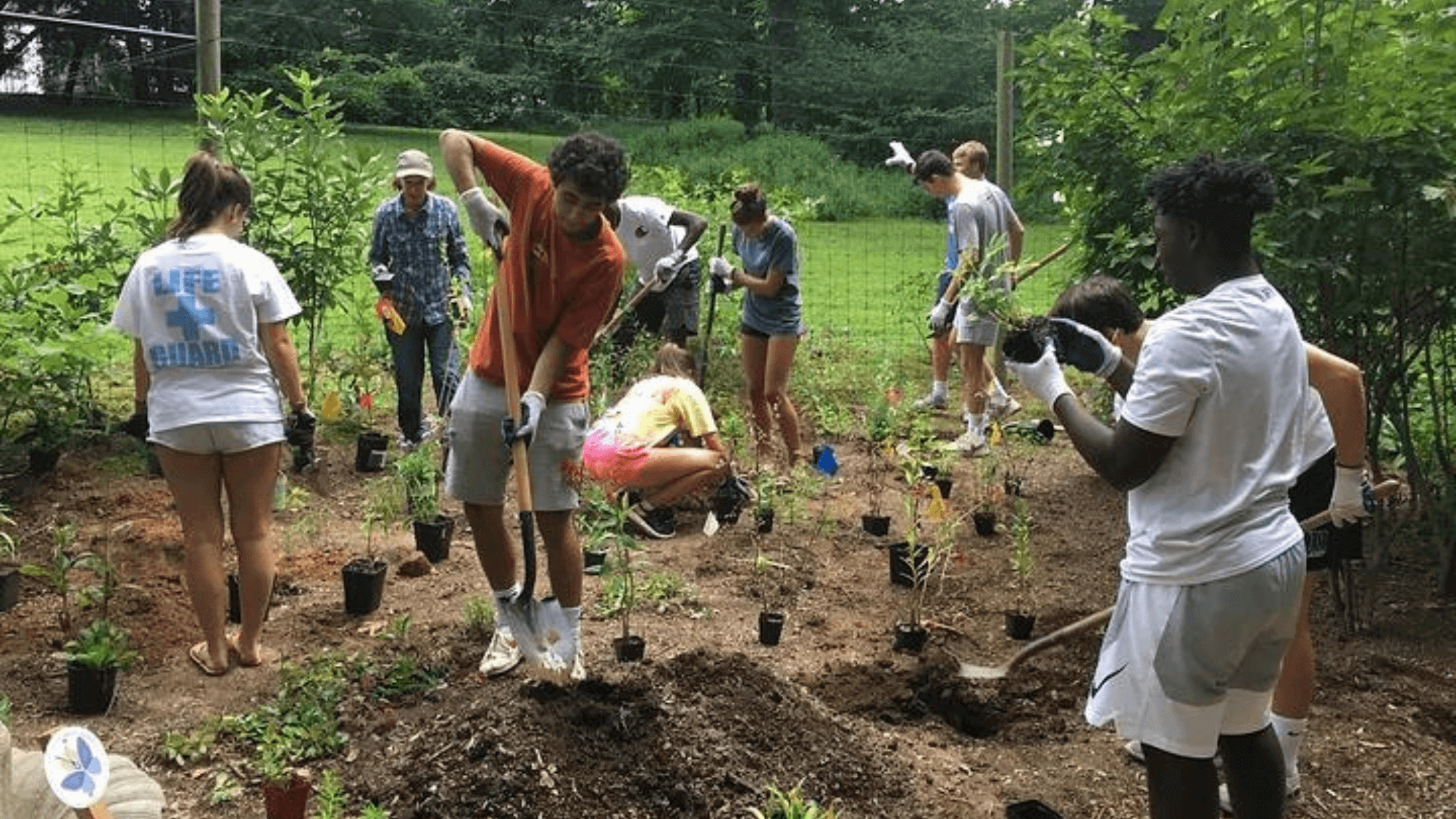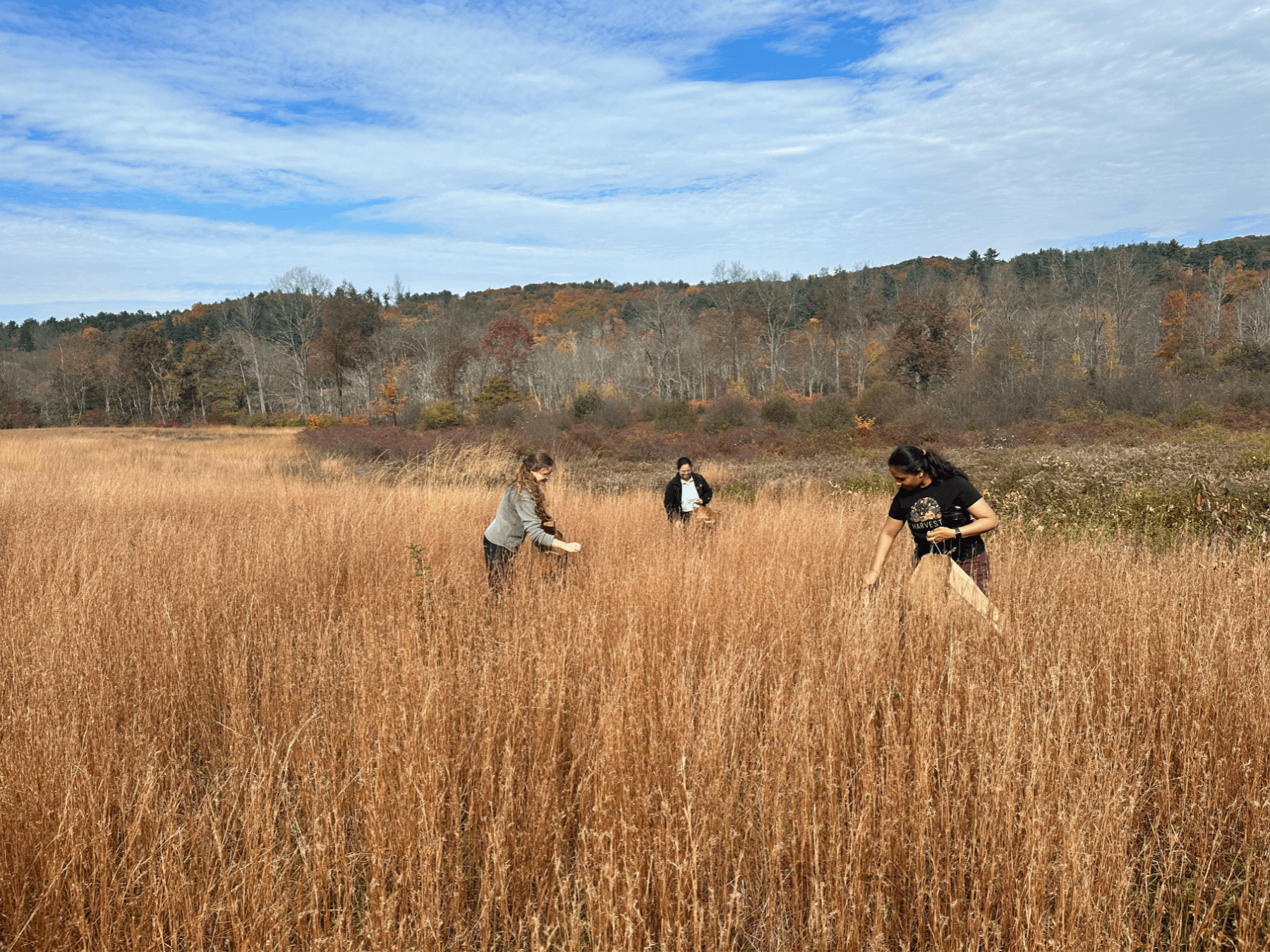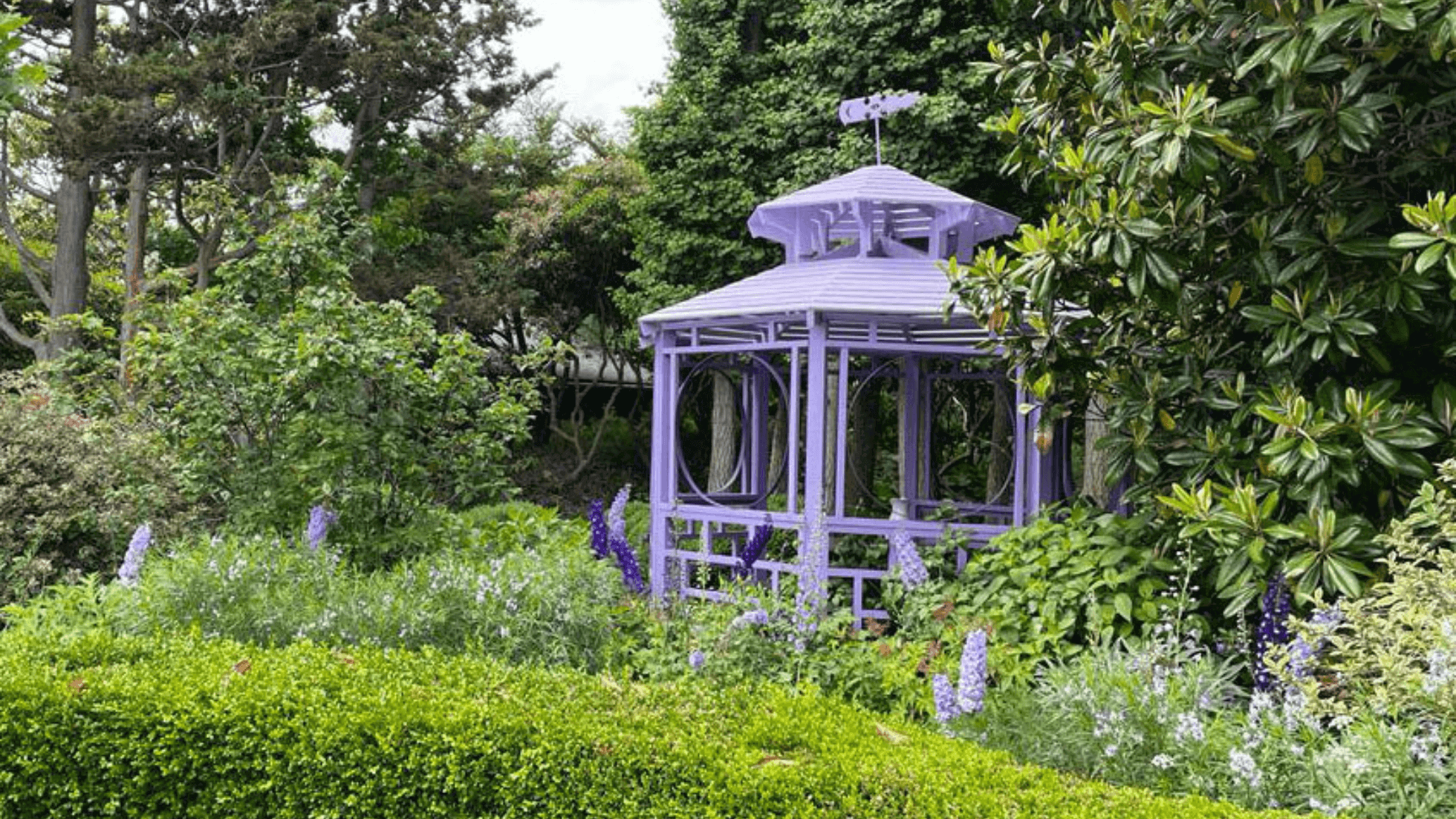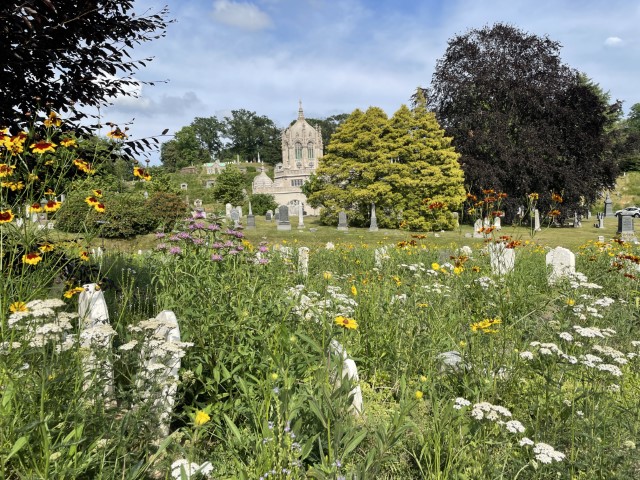
We’re pleased to welcome The Green-Wood Cemetery as the latest partner in our Pathways to PRFCT program, a network of diverse public gardens and parks managed for health and well-being, beauty, biodiversity, and sustainability. Photo by Stacy Lock.
Located on 478 acres in Brooklyn, NY, this National Historic Landmark is a sanctuary in the city—for both humans and wildlife. Under a canopy of more than 8,000 trees, the cemetery is a resting place for luminaries such as artist Jean-Michel Basquiat, journalist and politician Horace Greeley, and the first Black woman doctor in New York, Susan Smith McKinney Steward. It’s also a cherished oasis of peace and beauty for New Yorkers and visitors alike, and thanks to a dedicated team of horticulturists, who are working to create a climate-resilient landscape, it’s a haven for birds and other wildlife, too. Birdwatchers flock there during spring and fall migrations.
As the horticulture team adapts to our changing environment, they’ve adopted four initiatives focused on trees, invasive insects, meadows, and grasses:
Green-Wood’s collection of trees showcases an array of native oaks, hickories, American beech, tulip, sweetgum, and sassafras trees (including one of the oldest and largest in New York state). To help protect these “veterans,” some of the oldest in Brooklyn, Green-Wood practices retrenchment pruning, which mimics a tree’s tendency to reduce its canopy as it matures. They are also diversifying their native tree population, and planting hundreds of bare-root trees, which tend to be stronger and healthier, more energy efficient, and easier to plant.
To further protect their trees, Green-Wood has joined forces with the US Forest Service, US Department of Agriculture, and New York State Department of Environmental Protection to identify and track invasive insects. The collaboration with the U.S. Forest Service led to a discovery of a new beetle species in 2019. The same genus as the emerald ash borer, this beetle feeds on stressed beech trees and trees of the Rosaceae family. Through their invasive insect scouting program they are taking steps to help safeguard our urban forests.
They are also actively converting acres of traditional lawn into native meadows, which provide food, shelter, and breeding ground for wildlife. Last year, they teamed up again with Larry Weaner and Associates (the firm has designed other meadows at the cemetery) to create more than an acre of “experimental memorial meadows.” Divided into six sections, each one is seeded with a different mixture of native grasses and wildflowers. The horticultural team will closely monitor the new expanse, collecting data on the life cycles of each plant species, the number and variety of weeds that appear, and note the overall aesthetic to “identify plant species and their combinations that thrive with minimal maintenance and do not obstruct the monuments.”
Climate change heavily impacts urban environments, causing higher temperatures, frequent extreme rainfalls, and longer periods of drought. As a result, the growing season for turfgrass is longer, which means more mowing, while invasive warm-season grasses are rapidly spreading. Working with experts in sustainable grassland management and turf at Cornell University, Green-Wood is incorporating new seed mixes with slower-growing and drought-tolerant varieties, adjusting the frequency and height of mowing, and reducing soil disturbance.
We look forward to following Green-Woods progress and learning from these and other initiatives.
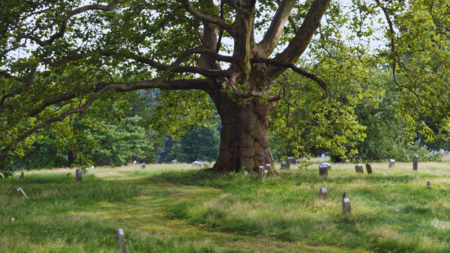
Green-wood’s urban grassland initiative focuses on 403 acres of turf grass. Photo by Art Presson.
